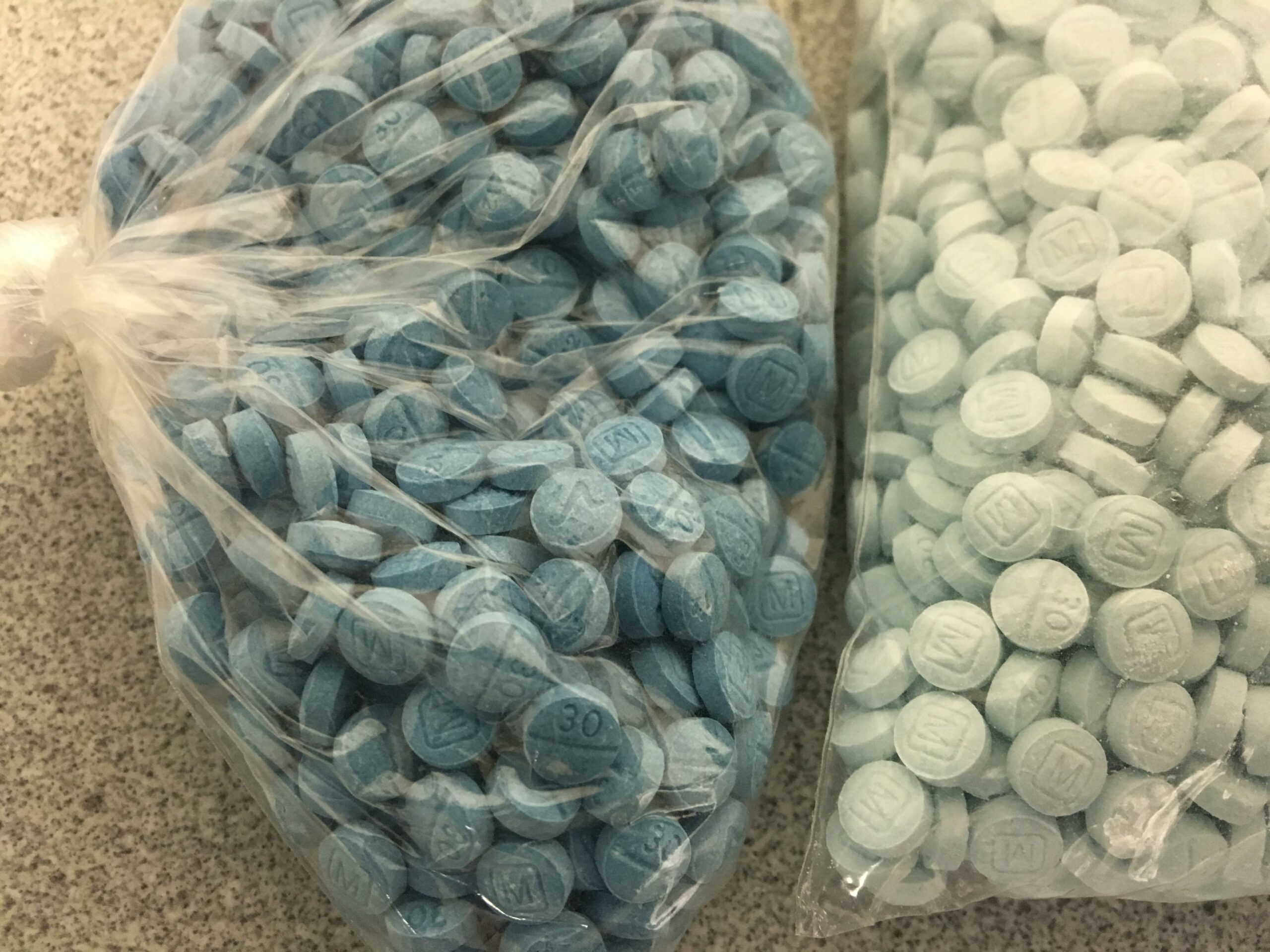The risks of opioids can be found in the South Valley

Fentynal pills in a bag. Larger scale to show details.
This editorial is the opinion of Morgan Hill Life
Most people see Santa Clara County’s public libraries as quiet sanctuaries for learning and contemplation. Thanks to Supervisor Otto Lee, they may soon become a front line in the fight against opioid overdose deaths.

Data from the California Department of Health indicated that in Santa Clara County in 2021, there were 154 deaths from overdoses of opioids. Of those, 125 were fentanyl related. The numbers show the problem is growing worse. In 2019, just 25 deaths were attributed to fentanyl.
The risks of opioids can be found here in the South Valley. Last month in a home on the 1000 block of Garcia Lane near Gilroy, three people were found dead of suspected fentanyl overdoses. A fourth person was revived by responding Santa Clara County sheriff’s deputies. All were in their 50s. Among them was Owen Alonzo, a family man and church member who was beloved by his family and friends.
Pastor Jesse Jimenez of Gilroy Victory Church knew Alonzo for 35 years.
“Hearing about this news was very disheartening. We’ve known Owen for a long time and he was not a fentanyl user,” he told an NBC Bay Area News reporter. “He may have partied and other things, and fentanyl wasn’t his drug of choice. And it’s unfortunate to hear about his loss. Our loss.”
Opioids, especially fentanyl, have become pervasive. The rise of fentanyl addiction has led to countless deaths and increased pressure on health care systems, law enforcement, and treatment centers. These drugs are cheap and readily available. They can be made into pills that look like candy so might be consumed accidentally by children and pets.
Teenagers’ use of fentanyl is especially on the rise. According to the Centers for Disease Control, fentanyl overdose deaths increased by 47 percent from 2016 to 2017, with the highest rate of death among people aged 15 to 34 years old. During July 2019 to December 2021, a total of 1,808 adolescent overdose deaths occurred in 32 jurisdictions with available trend data.

Fentanyl is extremely dangerous because of its potency, which can lead to overdose and death even in small amounts. It can cause severe respiratory depression, leading to a lack of oxygen to the brain and other vital organs, resulting in a high risk of permanent brain damage or death.
Because fentanyl is often mixed with other drugs, it can be difficult for people to know what they are taking and how potent it is, increasing the risk of accidental overdose.
Fentanyl is also highly addictive, and withdrawal symptoms can be severe, leading people to continue using the drug despite its dangers. Overall, fentanyl is a significant public health concern.

We applaud the county supervisors voting unanimously at the March 14 meeting to seek options for providing Narcan in the county’s libraries. This includes training for library staff and volunteers and seeking funding to support this effort.
But society needs to go beyond this basic action, including providing more education (especially to adolescents) on the dangers of opioids, as well as drug prevention campaigns, and treatment of addicts in detox centers.
Lives are at risk. We need to take action to save them.






